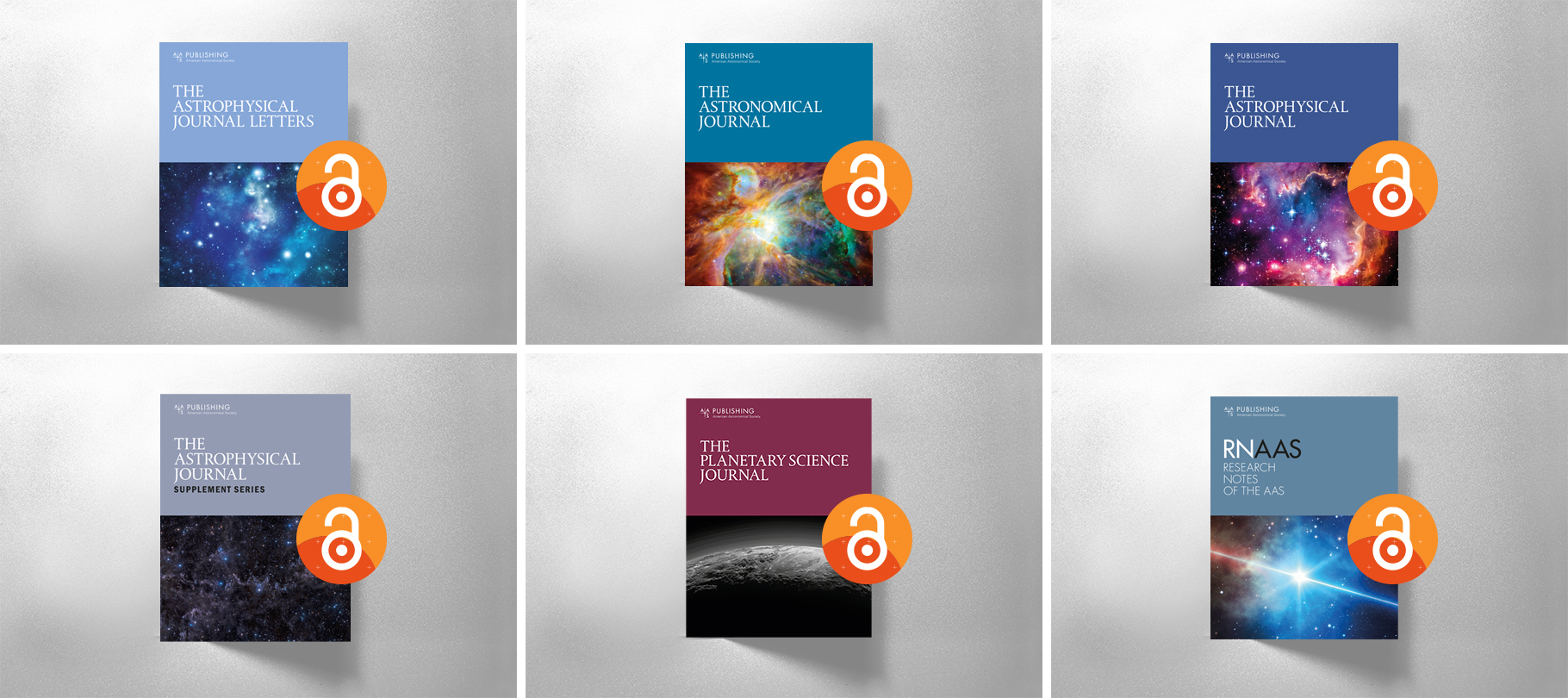AAS Journals' Impact Factors Remain Strong
According to the 2023 Journal Citation Reports, the impact factors of AAS journals remained strong in 2022. The Astrophysical Journal Letters (ApJL), the premier journal for rapid publication of high-impact astronomical research, and the Astrophysical Journal Supplement Series (ApJS), retained the ranks of 8th and 7th out of 69 journals in the Astronomy & Astrophysics category, with impact factors of 7.9 and 8.7, respectively. In the 2022 review period, ApJS had 297 citable items that were cited 34,687 times. The impact factor of the Astronomical Journal (AJ) remained at 5.3, while the Astrophysical Journal (ApJ) received an impact factor of 4.9. There was a slight decrease across the board due to a one-time boost from the inclusion of citations from early view content. This principle applies to all journals, not just AAS titles, so almost all titles have a slightly lower impact factor in 2022 than in 2021.

As one of several quantitative tools used to evaluate journal quality, the impact factor measures the frequency with which the average article has been cited during a particular period. It is rather subjective and has the most meaning when comparing journals within similar fields. In comparison, Astronomy & Astrophysics had an impact factor of 6.5, and Monthly Notices of the Royal Astronomical Society was at 4.8.
This year, Clarivate — an analytics company that determines impact factors for academic journals, among other roles — extended the Journal Impact Factor (JIF) to all quality journals in the Web of Science Core Collection, including the Arts & Humanities Citation Index and Emerging Sources Citation Index. This means that the JIF was extended to more than 9,000 additional journals from more than 3,000 publishers. Our own Planetary Science Journal (PSJ) therefore received its first impact factor at 3.4 and is ranked 2nd in its group (although journals in Emerging Sources Citation Index will not officially be ranked or receive a quartile or percentile until 2024). Another change to this year's JIF is that now impact factors include only one decimal place instead of three.
As we noted before, the impact factor is just one of many different metrics used to assess the performance of individual articles. Another measurement used by Google Scholar is the h5-index. In astronomy and astrophysics, our own ApJ (including ApJL) tops the list at 167. AJ and ApJS occupy the 5th and 7th spots, respectively.
AAS Publishing would like to take this opportunity to thank our editorial team for their hard work. We are extremely grateful for our wonderful reviewers who dedicate their time and effort with their reports that help drive excellent work to acceptance. Finally, we would like to thank our authors for their fantastic research and continuous support. Together we continue to support the AAS mission to enhance and share humanity's scientific understanding of the universe as a diverse and inclusive astronomical community.
We are looking forward to working with everyone and seeing our journals grow further.
To submit a manuscript or to learn more about the AAS journals, please visit https://journals.aas.org.
— The AAS Publishing Team

